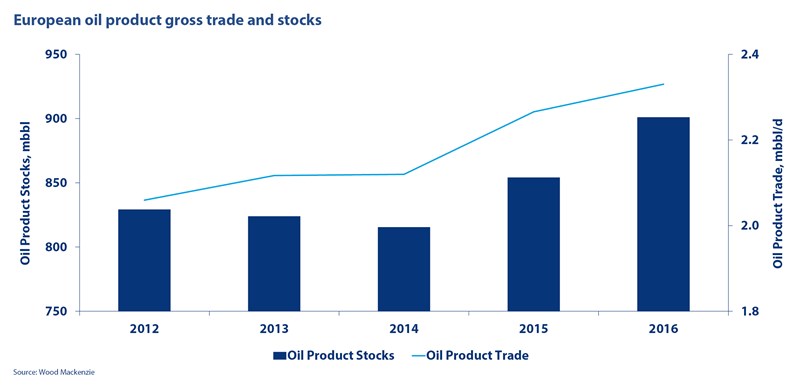Discuss your challenges with our solutions experts
European oil storage: Competitiveness is key to identifying sustainable investments
1 minute read
Chris Barry
Vice President, Downstream Consulting

Chris Barry
Vice President, Downstream Consulting
Chris's consulting expertise spans the refining, chemicals and storage sectors where he has advised clients worldwide.
Latest articles by Chris
View Chris Barry's full profileEnergy commodity markets have experienced a high degree of volatility in recent years, with large movements in prices and processing margins throughout the energy value chain (i.e. oil, gas, coal, refining, and shipping). The oil storage sector has also experienced a great deal of change but the impact to the bottom line has been relatively less severe thanks to a supportive market environment and long-term focused business model.
Indeed, the sector holds a number of attractive qualities for financial investors who may be seeking stable businesses with attractive long-term returns and a low risk profile. However, developments in the oil products market will bring new challenges going forward. We believe these changes will create both winners and losers, with operators and investors having to increase their focus on the underlying competitiveness of their storage assets to ensure they are well-positioned for the future.
Why is the oil storage market so attractive?
Demand for oil product storage has increased in recent years, underpinned by an improving market. This is reflected in increasing European oil product trade movements and stock holding volumes, which are supportive of utilisation and tank turns at existing sites, hence potential revenues.
The typical business models employed by independent oil storage operators also provide insulation from short-term pricing or demand shocks. They are often focused on long-term rental (or throughput) based contracts, have an ability to spread contracts and renewals over a range of different customers or timeframes and provide services integrated within the customer supply chain.
Investors have responded, driving an increase in M&A activity
A number of major transactions have taken place within Europe’s oil storage sector during the past few years, with an estimated 22 million barrels of capacity changing hands in 2016. Many deals have already completed in 2017 — including Credit Agricole acquiring a stake in Pisto (which operates storage and pipelines in France) from Macquarie and Applegreen acquiring the Belfast storage facility assets from Topaz — indicating a continuation of this trend.
The buyer pool for European assets has become increasingly dominated by financial investors (infrastructure funds and private equity) who are attracted by the long-term stable returns the oil storage sector is able to offer. Our perception is that competition between buyers has increased which is also driving a trend in higher asset valuations.
Sellers in Europe have predominantly been well-established oil storage operators or oil majors looking to free up capital from their positions in the mature European market (i.e. Vopak, Shell, and BP). The latter in particular have been going through a significant period selling off non-core assets as a response to the sharp decline in crude oil prices during the past few years.
Changing market conditions will present new challenges and opportunities for operators
A number of factors could increase pressure on the commercial performance of existing storage facilities, including; planned capacity expansions at existing sites within Europe, rising oil prices and potential for weakening contango as well as a long-term reduction in European product demand and refinery runs.
Other threats and opportunities exist from increasing product import flows from new Middle East refineries, changes to global bunker fuel regulations (2020 IMO MARPOL), and further EU refinery closures / conversions to terminals. Understanding the impact these changes will have on specific assets will be critical in assessing potential long-term commercial performance.
A rising tide lifts all boats — understanding competitiveness is key
The drivers of storage asset competitiveness are complex and linked to their physical attributes (i.e. capacity, draft, and product offtake facilities), their market and location (i.e. local demand and alternate supply sources), operational performance and the level to which they are integrated with customers needs.
Potential downturns in the oil storage sector are often felt hardest at the least competitive assets. Demand for capacity at these assets is often driven by lower revenue business lines such as contango or strategic storage, which can be more vulnerable to market conditions. We expect the most competitively advantaged assets and businesses will continue to thrive and can offer attractive returns for operators and investors in the sector. These terminals are often more highly integrated into customers supply chain and can offer value added services which cannot easily be replicated at alternate sites.
Our European Oil Storage multi-client study can help operators or potential investors gain critical insight into the market fundamentals, trade flows, storage rates, infrastructure developments, and drivers of competitiveness in order to support critical decision making.







